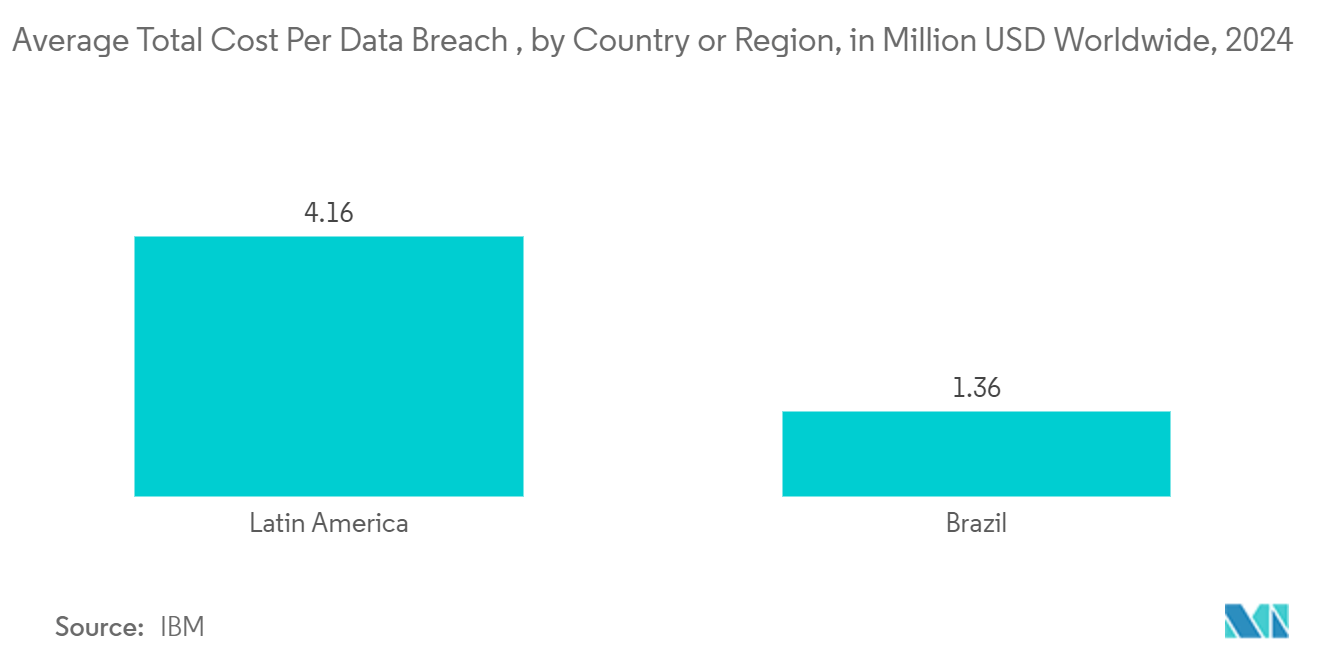Market Trends of Latin America Government & Security Biometrics Industry
Facial Recognition is Expected to Hold Significant Market Share
- Facial recognition biometrics will likely be vital to next-generation security systems, providing greater reliability and accountability. This advanced security solution automatically identifies and verifies a person's identity based on digital or video images. It can be compared to other biometric technologies used for various activities.
- An increase in malware attacks in the region is anticipated to support the market’s growth. According to the Federal Bureau of Investigation Internet Crime Report, the top international complainants for malware attacks are from Latin American regions, including Colombia, Mexico, and Brazil. Brazil accounted for 1,305 cases, the region's highest in 2023.
- The governments in the region are focusing on implementing facial recognition biometrics to offer improved security and enhance user experience. For instance, in January 2023, the National Civil Registry and the Colombian Union of Notaries introduced biometric facial recognition in remote processes.
- The addition of facial biometrics allows residents to complete residential registration remotely, either online or at ATM-style kiosks in high-traffic locations such as malls. Colombians are beginning to digitize their chip-enabled ID cards with their mobile phones. ID can be created through facial biometric authentication. By September 2023, more than 500,000 people had already created their IDs.
- Furthermore, in May 2023, Brazil implemented facial recognition technology at airports to facilitate passenger procedures. The new system can scan the biometric data of passengers' faces and check their identity in the country’s databases. In Brazil, the Ministry of Infrastructure, in conjunction with the Department of Administration and Digital Government of the Ministry of Economy, partnered with Serpro to streamline processes by leveraging "Augmented Identity" technology, specifically through a facial recognition system.

Brazil is Expected to Witness Significant Growth
- In recent years, the Brazilian government has placed a greater emphasis on bolstering national security measures. Biometric technologies, such as fingerprint, facial recognition, and iris scanning, are being increasingly adopted by law enforcement, border control, and other government agencies to enhance identification and verification processes.
- Brazil grapples with a range of security challenges, notably crime and fraud. According to the Violence Atlas Study, Brazil allocates approximately USD 120 billion annually to combat crime and violence, accounting for 5.9% of its GDP. The private sector's expenditures mirror this commitment, representing 4.2% of the nation's GDP.
- Brazil lags in specific technologies, giving rise to favorable conditions for fraud. For example, more than half of the documents forged in Brazil do not contain machine-readable zones and are, therefore, particularly easy to make up. Among Brazilian ID documents, passports are the most forged (1.2% of all passports have signs of forgery), while driving licenses are the least likely to be forged (0.18% of forgeries).
- As Brazil advances the rollout of its new national identity card, designed to facilitate secure data exchange between the Federal Revenue Service and civil identification bodies, the government is bolstering security measures by delving into blockchain network development. Under initiatives like the Registro de Identidade Civil (RIC) project, the Brazilian government is rolling out biometric solutions to provide citizens with a secure, biometrically backed national ID card.
- With the rise of cybercrime and identity-related fraud, the Brazilian government and citizens are becoming more aware of the need for robust identity verification solutions. Biometric technologies are perceived as a reliable way to combat these challenges. According to the Netscout report, Brazil faced 328,326 distributed denial of service cyberattacks in the first six months of 2023, accounting for 42% of all such attacks in Latin America.


